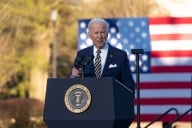You have /5 articles left.
Sign up for a free account or log in.
In 1926, New York University professor James E. Lough took 500 students on a field trip of sorts: a journey around the world on what he called the Floating University. After they set sail from New York City, they went to Cuba, through the Panama Canal, to Los Angeles and Hawai‘i, and then on to Asia.
In Asia, they visited Japan, China, Hong Kong, the Philippines, Thailand, Singapore, Indonesia and India, then went through the Suez Canal to tour the European capitals (some of which required them to travel on land).
Why haven’t you heard of this venture? It was deemed a failure upon its completion and wasn’t repeated.
Tamson Pietsch tells the story of Lough’s ambitions and how they were destroyed in The Floating University: Experience, Empire, and the Politics of Knowledge (University of Chicago Press).
Pietsch is associate professor of social and political sciences, and director of the Australian Center for Public History, at the University of Technology Sydney.
She responded to Inside Higher Ed’s questions about the book via email.
Q: How did you first learn about the Floating University? What attracted you to its history?
A: My initial encounter with the Floating University was an accident. While working on an entirely different project, I came across a pamphlet from the mid-1920s advertising the voyage that had been slipped into the back of a book. Printed on two sides of a single sheet, it described a voyage around the world that was designed to enable college students to “develop the ability to think in world terms … through first hand contact with places, people and problems.”
I wanted to know more about this intriguing initiative, but I soon found that, although the trip dominated the press coverage from the time, it was all but absent from the history books! That was puzzling to me. The more I dug, the more I began to realize that—precisely because it had been ignored—the Floating University world cruise opened a window onto a 1920s contest over what counted as legitimate knowledge.
Q: What did the students study between their visits to various cities?
A: One of the remarkable things about the Floating University voyage was that it awarded students academic credit for study at sea, replacing an ordinary college year. Students could choose from 73 subjects, including government, mathematics, history, psychology and journalism, and classes for these ran while the ship was in transit between ports, with exams held at the end of the first and second semesters.
The idea was that these subjects would be taught in a way that made the students’ experiences on the ship and in the places they stopped central to their learning. Although this was left up to the predilection of individual faculty members, for the most part the formal academic program was actually quite successful.
It was, however, only one element of the educational experience the Floating University promised. Equally important, as far as the ship’s organizers were concerned, was the “extracurriculum,” which included sports, dramatic and music groups, and also the shore program, which included visits to foreign dignitaries and host universities, as well as official guided tours of port cities. It was these shore visits, however, that opened the door to some of the trouble the voyage faced.
Q: Your book covers press attention to the various goings-on (noneducational) of the students. Were the students truly engaged in inappropriate behavior? Or were the journalists just out for a good story?
A: This is a great question, and the answer turns on who you think is best placed to judge what is inappropriate. The students certainly got up to mischief. In Japan several got drunk and broke into the royal suite in the Imperial Hotel, stole a statue of a Buddha from a temple, and got into a fight with Tokyo policemen. The U.S. ambassador said that “the vandalism had done more to hurt the relations between the two countries than anything that had happened for 15 years.”
Trouble with alcohol continued throughout the voyage, and there was even a stowaway found who had been hidden by the students. A great deal of gendered panic was also generated about romance and sexual relations. That all of this behavior was not very different to that happening on college campuses across the United States in the same period was beside the point.
Journalists knew good copy when they saw it, and—thanks to their press coverage—in the end it was the behavior of the Floating University’s students that came to be seen as the measure of their learning. If students were drinking in bars, skipping lectures and having romances with coeds, then they were neglecting their studies, or so the newspapers’ story ran. And on this logic the Floating University was found wanting.
Q: The students also met with Mussolini and Gandhi. Did the students grasp what was wrong with the former leader and what would propel the latter leader to power?
A: The students were, on the whole, quite wowed by their encounters with world leaders, but the circumstances in which they met Gandhi and Mussolini differed significantly.
While the whole ship was invited to the Palazzo Chigi to meet with the latter, only 10 students met the former, having left the Floating University in Colombo to travel overland to Calcutta. Perhaps as a consequence, the articles that appeared reporting on the meeting in the shipboard student newspaper were remarkable in that they compared the “Swarajists” to American revolutionists—both were fighting for their independence from the British.
Schooled in the anticolonial foundations of their own national story, the American students could recognize the national aspirations of the Indians, but they had a harder time seeing other kinds of rebellions—notably the rising communist agitation in China—as legitimate. It was the threat of communism in Italy that was cited as one of the reasons for the students’ admiration of Mussolini. While some expressed skepticism at his posturing, the ship’s student newspaper declar[ed] that Italy was “in better condition economically and physically” thanks to his rule.
Q: Today we have Semester at Sea and a range of study abroad programs, and yet until I read your book, I knew nothing of the Floating University. What are the lessons from the Floating University for providers of study abroad today?
A: The reason for the Floating University’s disappearance from the history books was one of the things that intrigued me about its story. New York University, which originally sponsored the Floating University, had actually started study abroad tours offering college credit for travel experience in the years before World War I, making them probably the first university in the United States to do so.
But by the mid-1920s they pulled out of all their overseas ventures, having concluded that only lessons learned in class from an approved university instructor should be granted credit. As far as NYU was now concerned, it was academic expertise, not direct experience, that should underpin authorized knowledge of the world during the 20th century.
But in the period after the Second World War, new study abroad programs began to be founded, and Semester at Sea was one of them. In fact, one of its original board members was James Price, the student president aboard the original Floating University. In the last 30 years, “international education” has boomed in U.S. universities with the Institute of International Education reporting that in 2018, one in 10 U.S. undergraduates studied abroad during their undergraduate degree.
But, as historian and educationalist William Hoffa has pointed out, the relationship of “study abroad” to academic credits remains a problematic one for U.S. universities. No matter how organized or regulated it is, international education is founded on the recognition that personal experience matters. In traveling abroad, students learn something about the world that they wouldn’t learn if they stayed at home. This recognition of the importance of experience fundamentally challenges the university’s claim to be the primary authorizer of knowledge about the world—as it well should. Because although this claim has, for most of the 20th century, underpinned both the university’s business model and its social authority, it is a claim that is neither natural nor inevitable, and it is one that excludes whole dimensions of human life.






